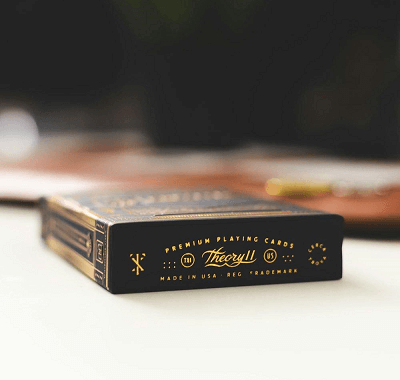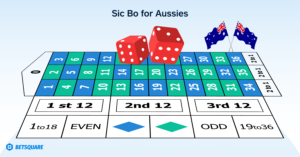Rookies' Handbook for Caribbean Stud Poker

Caribbean Stud Poker has solidified its place as a favorite casino game, with roots tracing back to the Caribbean in the vibrant 1980s.
Rumor has it that the creative mind behind Caribbean Stud was James Suttle, who was operating a casino in Aruba. He envisioned a fresh poker experience at tables worldwide, including in Australia.
Indeed, the allure of Caribbean Stud Poker spread like wildfire in Australia as gaming venues sought to expand their repertoire of play options.
With other favorites such as Ultimate Texas Hold’em Poker and Pai Gow Poker appearing in Australia's grandest casino halls, Caribbean Stud added a refreshing variation to the poker genre.
As with Ultimate Texas Hold’em Similar to Pai Gow Poker, Caribbean Stud pits you against the dealer, providing an engaging alternative to the multiplayer poker scenarios.
Rooted in the fundamentals of 5-Card Stud, Caribbean Stud Poker provides an exciting adventure for those looking to refine their poker prowess. Let’s explore the critical elements of this captivating casino staple.
Rules of Caribbean Stud Poker
If you're venturing into Caribbean Stud Poker for the first time, this section is your launching pad. We cover the core rules, the process of placing bets, and the diverse range of betting options available.
Caribbean Stud Poker shares the simplicity found in many poker variants. With clearly defined mechanics and straightforward bet types, it’s a welcoming proposition for new players.
Your journey starts with an ante bet for your hand. This initial wager serves as your ticket to join the table. Note that the minimum and maximum ante amounts can depend on the casino's policy.
Beyond the ante, some tables entice players with an optional side bet, typically tied to a progressive jackpot, offering added excitement to the game.
A standard side bet amount usually stands at $1, but feel free to bet more. The result of your side bet hinges on the dealer’s evaluation of your hand, potentially leading to a lucrative payout.
Dealing the Cards
After all the required and optional bets are in place, the dealer identifies active participants for the forthcoming round.
The dealer distributes five cards to each participant, with the cards kept face-down to add suspense to the dealer’s own hand, yet one of their cards is shown face-up.
You’re allowed a glimpse at your own cards but must refrain from discussing them with others. Violating this rule will nullify your hand and yield your bets to the house.
Player Decision
Faced with your hand and a glimpse of the dealer's up card, you must decide how best to proceed with your Caribbean Stud Poker strategy.
You must now decide whether to fold or call .
- Fold
If your hand lacks at least a pair, the prudent move is to fold. However, if you hold an ace high, possibly with a king kicker, consider playing on unless the dealer's card suggests caution. - Call
A pair or better in your five-card hand warrants placing a call bet, which is double your ante. For example, with a $10 ante, you’ll need $20 to proceed to a showdown.
Reveal and Showdown
Once players choose to fold or call, the dealer reveals their remaining cards, unveiling the ultimate Caribbean Stud showdown.
The dealer first determines the strength of their hand. If it's unqualified, players receive a 1:1 return on antes, with call bets refunded.
A qualifying hand by the dealer must feature either an ace or king, or match a pair or higher-ranking hand. The benchmark for playability is an A-K-4-3-2 hand or better.
Should the dealer qualify, their hand is then matched against each remaining player's, dictating the outcome.
Succeeding with a superior poker ranking against the dealer results in payouts on both ante and call bets.
Conversely, holding an inferior hand to the dealer’s results in relinquishing your bets, marking the start of a new round.
Before transitioning to the next round, the dealer assesses any hands linked to the optional progressive jackpot side bet.
Winning a slice of the progressive jackpot often requires a flush or stronger. The more formidable your hand, the larger your share of the jackpot.
Payouts
Now, let’s delve into how most Australian casinos initiate a payout on winning Caribbean Stud Poker hands:
| Hand | Caribbean Stud Poker Payout |
| Royal Flush | 100:1 |
| Straight Flush | 50:1 |
| Four-of-a-Kind | 20:1 |
| Full House | 7:1 |
| Flush | 5:1 |
| Straight | 4:1 |
| Three-of-a-Kind | 3:1 |
| Two Pair | 2:1 |
| Pair or High Card | 1:1 |
Turning our attention to the payout triggers for successful progressive jackpot side wagers in Caribbean Stud Poker at Australian casinos:
| Hand | Caribbean Stud Poker Payout |
| Royal Flush | 100% of the total progressive jackpot |
| Straight Flush | 10% of the total progressive jackpot |
| Four-of-a-Kind | $500 |
| Full House | $100 |
| Flush | $50 |
Note: In a twist, beating the dealer isn't necessary for a progressive jackpot side bet victory. Imagine the dealer having four jacks but you hold a full house. You may lose the ante and call but still enjoy a side bet triumph.
Final Words
Caribbean Stud Poker enlivens gaming tables with its distinctive tropical charm, subtly transforming classic poker dynamics.
Both beginners and experienced players find appeal in the game's straightforward nature. Australians relish its laid-back atmosphere, paired with opportunities for significant wins without direct competition.
The allure of the progressive jackpot side bet lies in its thrilling anticipation and potential for reward.
Our initial advice is to adhere to basic strategy—fold anything weaker than A-K. Success in casino poker involves smart play, knowing your moments to assert or retreat.
Most of the Top online Australian casinos offer RNG and live dealer Caribbean Stud Poker options, providing excellent venues for practice and strategy refinement, whether at home or on the move.
For comprehensive insights into poker and other table games, keep an eye on our blog section . Here, we regularly deliver valuable tips, trick strategies, and guides designed to prepare you for triumph.






